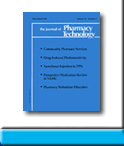 |
 |
ANTITHROMBOTIC THERAPY
DURING AND AFTER INTRACORONARY STENTING
Chad A
Panning
To request full article click here.
OBJECTIVE: To evaluate the impact on patient outcomes of antithrombotic therapy during and after intracoronary stenting.
DATA SOURCES: A MEDLINE search (1966–July 2000) for English-language clinical trials and review articles using the search terms stent and coronary with one or more of the following search terms: abciximab, tirofiban, orofiban, xemilofiban, eptifibatide, aspirin, heparin, enoxaparin, tinzaparin, dalteparin, hirudin, danaparoid, dipyridamole, cilostazol, dextran, warfarin, anticoagulant, ticlopidine, and clopidogrel. References from these articles were reviewed for additional articles. Pharmaceutical companies were contacted to identify unpublished studies. A total of 177 sources were initially identified.
STUDY SELECTION: Studies were selected through an unblinded individual review for prospective, randomized clinical trials evaluating patient outcomes related to antithrombotic therapy during or after intracoronary stent placement. Additional human and animal studies were included for background and introductory information.
DATA EXTRACTION: Patient characteristics in each study were compared with those of the overall stent population. The primary end point measurements were defined. The completeness of follow-up and power analysis was assessed.
DATA SYNTHESIS: Intracoronary stenting is now a common modality for maintaining patency of occluded arteries. Antithrombotic therapy during coronary artery stent placement is changing as knowledge about the pathophysiology of thrombus formation expands and new medications become available. Development of new stent placement techniques, new stent designs, and methods of restenosis irradiation or prevention have coincided with evolving antithrombotic regimens.
CONCLUSIONS: The current antithrombotic regimen used in coronary artery stenting is complex, but has a lower incidence of hemorrhagic complications and thrombosis compared with previous anticoagulant regimens. Antithrombotic therapy may need to be tailored to individual patient contraindications.
J Pharm Technol 2000;16:185-96.
To order the complete CE article click here.
To request full article click here.
|
|
|
||
|

